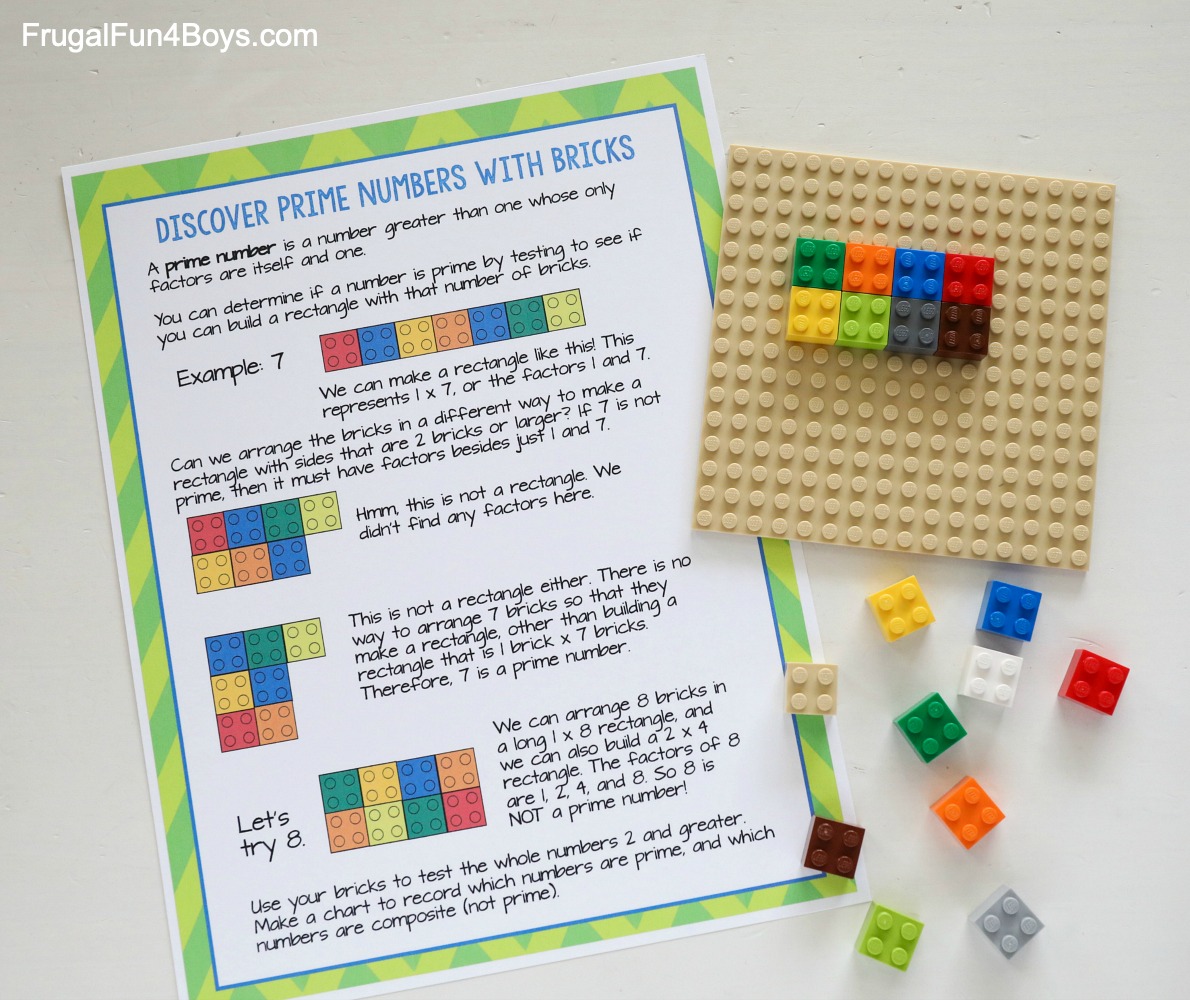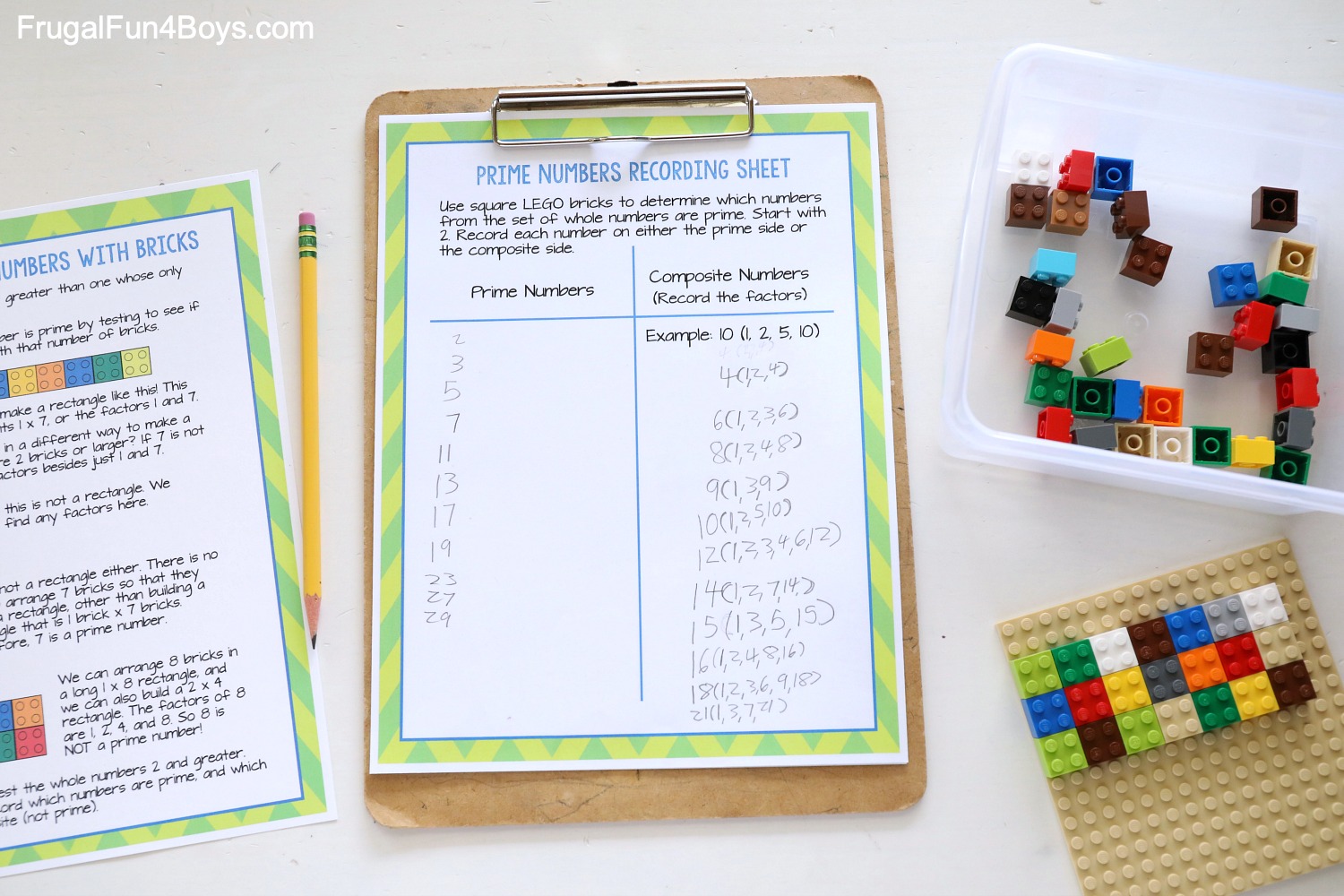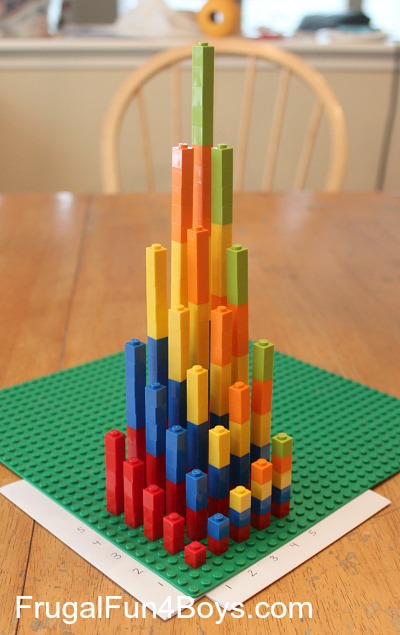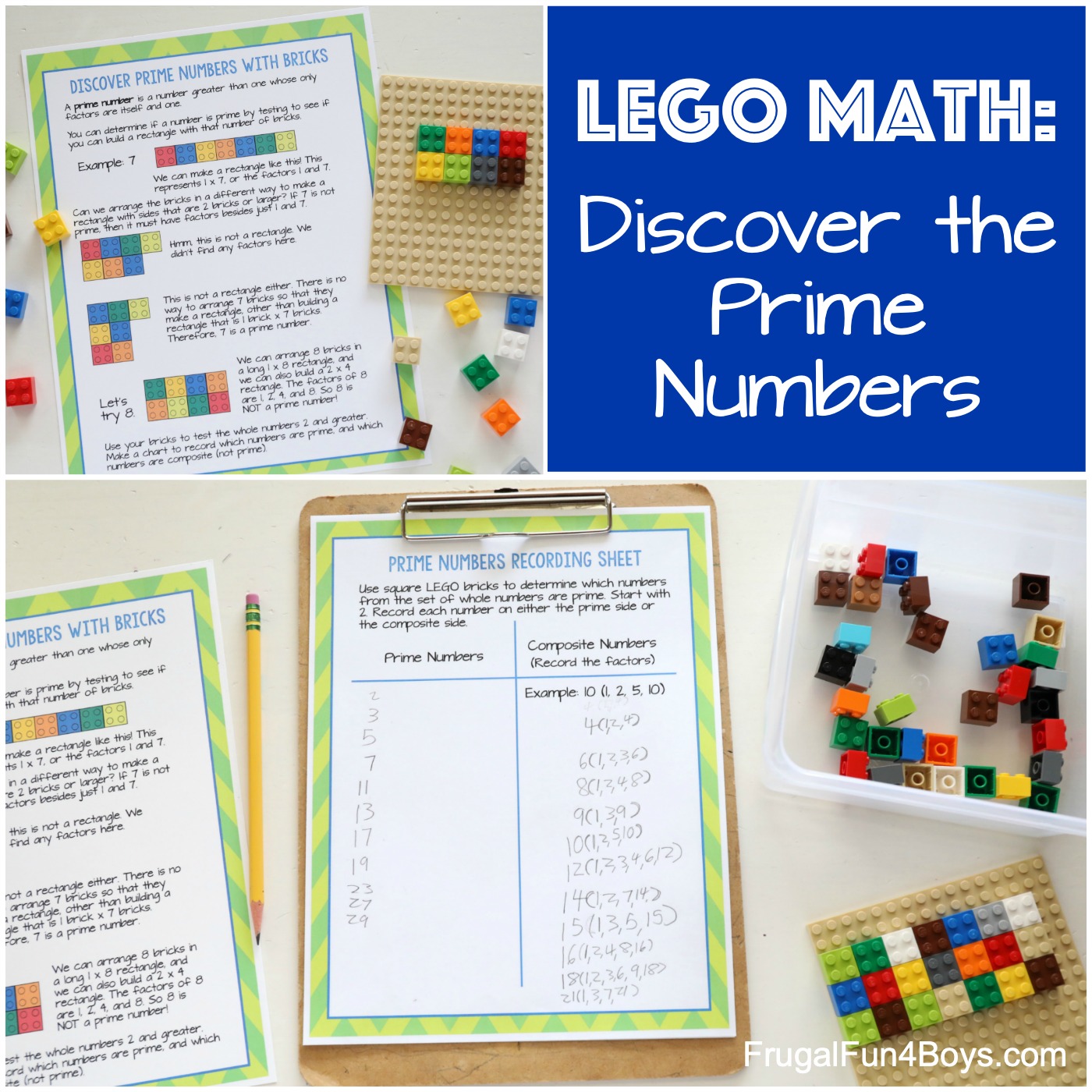If you’ve followed this site for any length of time, you probably know that we are totally into LEGO®, and we love using LEGO® bricks for learning! This math lesson will allow kids to determine which whole numbers are prime numbers using LEGO® bricks. This math activity is perfect for visual or kinesthetic learners because it will allow them to really picture the concept behind prime numbers.
This is a very low-prep math activity – all you need are the printable lesson pages and some 2 x 2 square LEGO® bricks.
I would recommend this math activity for 5th grade, or advanced 4th graders. Kids need to be solid on the concept of multiplication, and it would be helpful if they are familiar with factors. If not, factors can be explained quickly before you begin.

I created this activity for my 5th grader, and I used it as an introduction to prime numbers before looking at prime numbers in his math book. It was a fun way to explore the concept, and really helped it stick in his mind. He is pretty much the poster child for kinesthetic learning! Always has to touch and feel everything…
Setting up the Prime Numbers LEGO® Math Activity:
The file to print is at the bottom of this post. I made an instruction page and a recording page. You can walk through the instruction page with your child, but kids should also be able to handle working through this on their own. I wanted it to be an independent activity, because I think this would make a great math center in a classroom or library!
You may want to laminate the instruction page for durability.
You’ll need 2 x 2 LEGO® bricks – 30 is adequate, but I would recommend 50. Thirty bricks would allow the kids to find the prime numbers up through 30. A baseplate (either 16 x 16 or 32 x 32) is nice, but not a requirement.

Here’s how it works!
A prime number is any whole number greater than 1 whose only factors are itself and 1. Eight is not prime, because its factors are 1, 2, 4, and 8. However, there are no two numbers that you can multiply to get 13 (other than 1 x 13), so it is a prime number.
Composite numbers are numbers that are NOT prime.
If a number is composite, then students will be able to build a rectangle using that number of bricks. The rectangle should have sides that are 2 or greater, because a side length of 1 (such as a 1 x 7 rectangle) does not prove that a number is composite. ANY number of bricks can be lined up in a straight line.

In the photo below you can see what students will discover… with some numbers of bricks, there is NO way to build a rectangle! This means the number is a prime number, since it has no factors other than itself and one.

I asked Owen to write the factors next to each composite number. It’s good practice! However, you can see that he wrote very large and then needed two recordings sheets. So you can decide which you want to do. You can fit a LOT of composite numbers in there if you don’t write the factors, or don’t write so big!
We went through 30, and he had to record some composite numbers on a second page.

Note: I chose to count bricks in this activity, rather than counting studs. I liked the idea of moving around the individual units. If you decide to count studs, I would recommend using only 1 x 1 bricks to make it easy to manipulate the rectangle.
Ready to print your LEGO® prime numbers math activity? Click the link below. The file will open, and you can print from there.
CLICK HERE: LEGO Prime Numbers Math Activity
See Below for More LEGO® Math Activities!
Teach Addition with Regrouping with LEGO® Bricks
Build a 3D LEGO® Multiplication Graph

If you’re just getting started with multiplication, this LEGO Printable Multiplication Game is just the thing!


0 Comments
Post a Comment